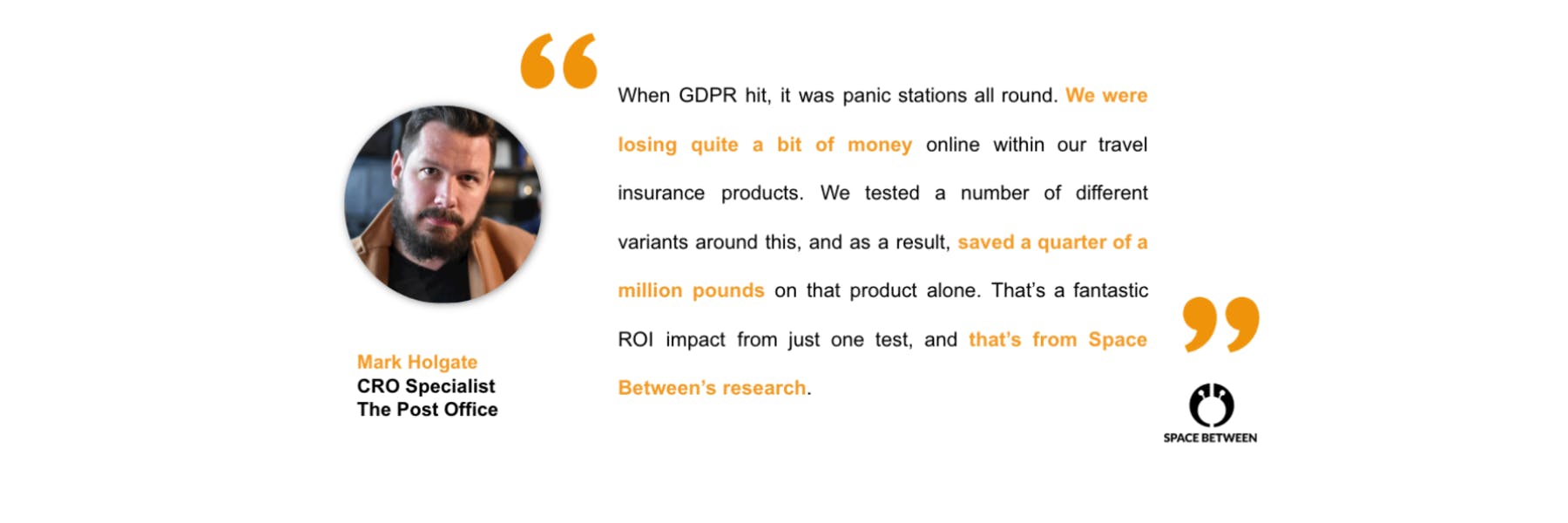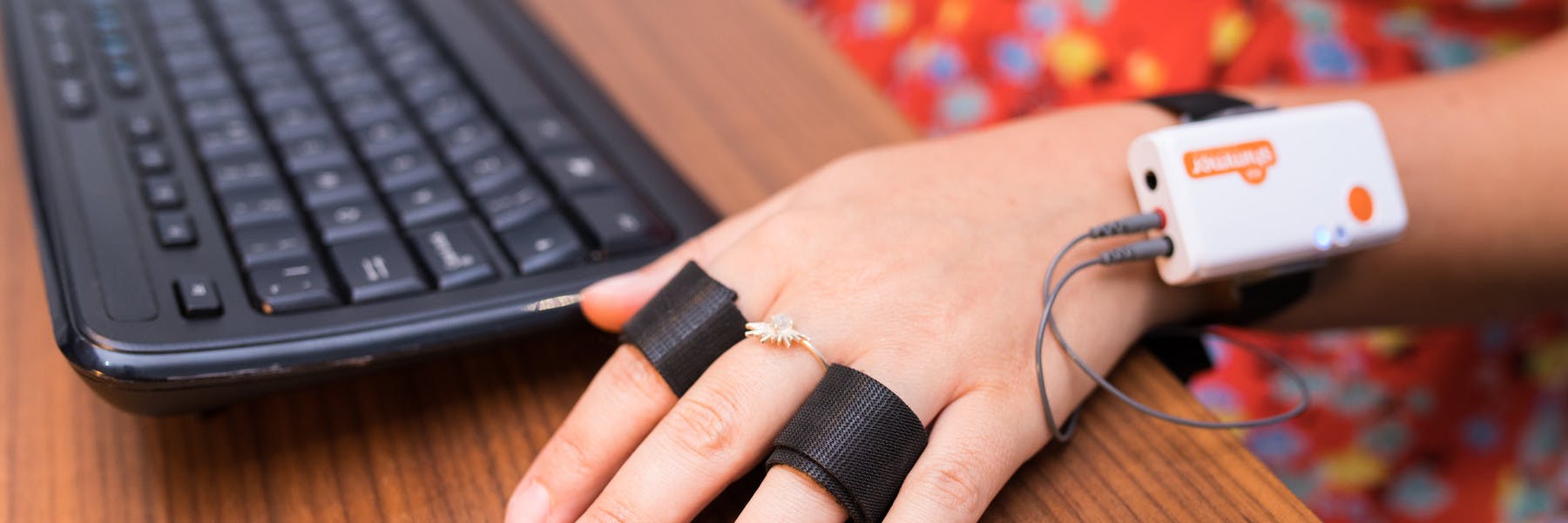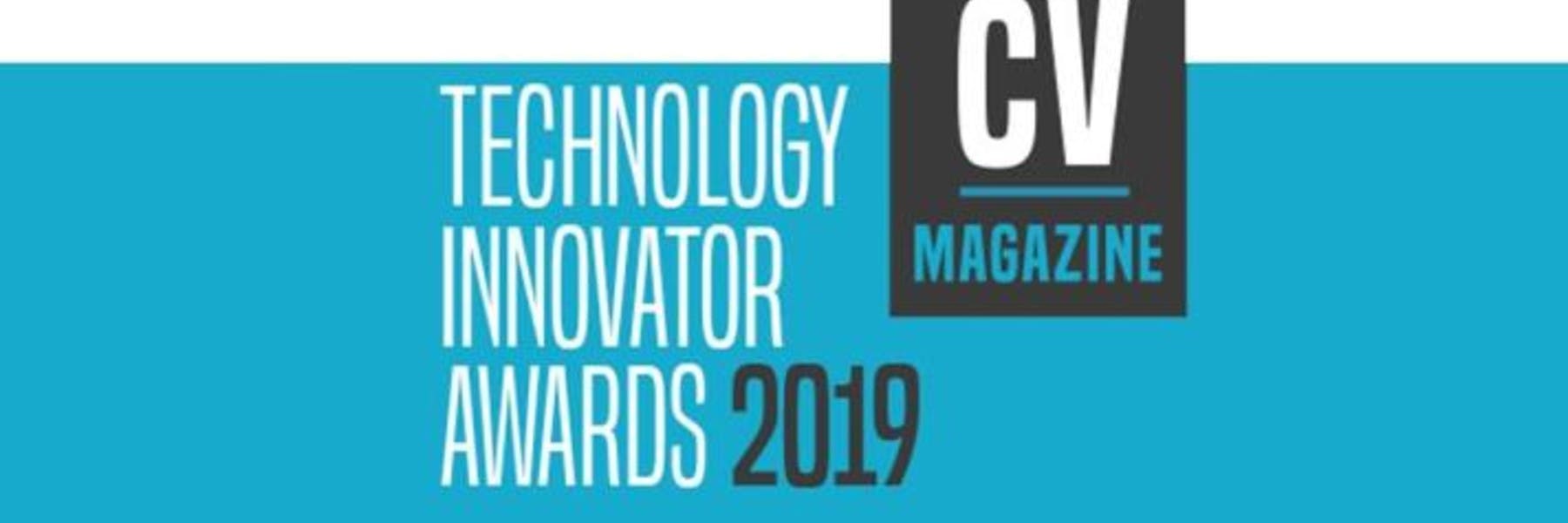How The Post Office Saved £250,000 with Conversion Rate Optimization
An Insight into an Award-Winning CRO Project

Introduction
HM Post Office made a vital business pivot over the past 12 months. Historically, The Post Office were a bricks-and-mortar, branch-orientated business. They relied on footfall in their stores and put relatively little emphasis or investment into their digital experience. But the need to reach and satisfy new digital customers, as well the need to "future proof" their strategy, necessitated change. The Post Office in 2019-and-beyond, is focused on the strengthening of their digital strategy, and diversification of their product offering online. They have invested heavily in a team of in-house Conversion Rate Optimisation specialists, as well as launching an externally-led CRO project (in conjunction with eCommerce Consultants, Space Between). Methods, approaches used and results of the project are discussed in this article. The piece of work was recognised nationally an award win - UK eCommerce Consultancy Project of the Year (Innovation Awards - CV Magazine).
Background
The programme began with a simple goal - to truly put the customer at the heart of the business. In order to achieve this, the first step of the project was to focus on identifying and analysing their customer, and their needs. This however, was not your standard piece of User Research. With one of the few portable Biometric Testing Laboratories on the mainstream market, this was the next-level kind of User Research. These lab sessions uncovered a plethora of key issues that users were experiencing, as part of the user journey on what is now the old version of the Post Office website. The motivator for the development of a better functioning website, was to allow users to better self-serve - for various products including insurance, banking, foreign currency, credit cards, mortgages, savings, loans and end of life services. But, as the User Research analyses uncovered, there were several key issues that were identified as impediments to this process. In other words, customers were finding it difficult, or frustrating, to use the self-service products in their old form. Several rounds of User Research testing, on several different users, took place over the course of a day. Insights from this research was collated into a priority list, which used a points-based system to identify things like quick wins and big blockers. This allowed the project to have a clear focus on what needed to be improved upon, in order to provide the ultimate digital customer experience, as well as the best order in which to start working through the to-do's.
The Research
Recruitment for The Post Office test subjects was done through their customer lists. Several users were invited to attend the Research Session, with compensation in the form of a gift voucher as a thank you for their time. Of those invited, eight individual users accepted and were confirmed for the Biometrics Testing Day. The testing was conducted by Space Between, using their portable Biometrics Laboratory. The lab kit includes psychological testing apparatus typically found in educational institutions, such as Universities. For example: facial emotional analysis technology, electroencephalograph (brain activity cap), galvanic skin response (fingertip sweat receptors), pulse rate, mouse tracking on screen and eye tracking on screen. Qualitative measures such as participants speaking aloud during their website interactions, to self-report on their experiences, were also used. The key here was multiple measures (of both qualitative and quantitative data) were analysed for each user experience journey. It becomes obviously very quickly when common barriers are observed across different subjects. Feelings such as frustration or anger being experienced at a particular period throughout the online experience - or even worse - transactional stage of the process - are easy to monitor and measure. Whether participants exhibited any unconscious reactions to stimuli (such as liking or disliking call-to-action buttons for example), can also be reported.

The Analysis
With the information gathered during the user research, Space Between worked closely with the Post Office to develop a workflow based on time frame, urgency and ease of implementation. This categorisation system determined the ultimate priority of items on the work list for completion. This work list was a comprehensive record of all of the tasks (and hypothesis) required to be tested and implemented. One of the first key findings was that 30% of users could not see the main call-to-action button on the homepage of the website.
Another finding was that 99% of users experienced an error message at a particular point of applying for travel insurance online (input of the date of birth field). And yet another was that 73% of users received an error message after failing to interact with a 'T's and C's' section of the journey. The Biometrics Research also picked up on strong feelings of frustration by users at this stage of the journey. Users were also found to be confused at the pricing page. This was due to over-information and too many pricing choices and bundles for users to choose between.
With the work list ready to go, implementation began. This was done with the Post Office internal team, under the direction and consultation of Space Between's technical lead. Each priority item was tested and worked through in order of recommendation. The work lists collated represent an ongoing body of work, incorporated into the website optimisation and longer term CRO programme.

The Results
The key findings discussed in the Analysis have been summarised below:
- The main homepage call to action button was adapted into a sticky button, and first tested on mobile. This was then rolled out across all devices.
- The date of birth input error was overcome by testing a simpler variation to the field. It was also supported by a tab index to take users cleanly from field to field.
- The 'T's & C's' button that was frustrating users and creating a barrier to completion early on in the travel insurance journey was adapted and moved to a later stage of the transactional process.
- The pricing page and bundles were simplified, making it easier for users to find the product they were looking for and to make their selection. This resulted in a more streamlined checkout process, with fewer cart abandonments.
Cost Savings:
On the first round of the CRO programme, HM Post Office reported cost savings of over £250,000 just within the first 6 months. As this is an ongoing project, cost savings will continue to accrue with time, and as the improvements are incrementally made to the website journey, so will increased revenue. These measures are based in general terms off of two main measures. The first is minimising drop-off, or abandonment of a journey (usually due to poor user experience). The second is the increased conversion as a result of optimising journeys through key features like placement, call-to-actions, colour contrasts, and appropriate steps to journey, for example.
Recognition:
This project was run by Space Between and delivered jointly with The Post Office. The project received national acclaim and were also awarded the UK eCommerce Consultancy Project of the Year by CV Magazines Innovator Awards.
What's Next?
The digital landscape is a dynamic one. Biometrics and CRO programmes are designed to serve a longer term purpose. In the example of this project, it is an ongoing process whereby all of the key insights are tested, and rolled out on the website. When the work list is complete - it doesn't stop there. This is the stage (and usually the time) when a fresh round of testing can take place, with new test subjects. The aim of this is to find the next work list of improvements and implementations to be made, in order to further optimise and refine the overall digital journey. Other aspects of a business's digital presence may also be tested - for example an app, or mobile site.
If you are interested in learning more about this project, or how you could start a similar project in your business, give us a call or drop us a message on the following:
+44 (0) 01233 800 991
